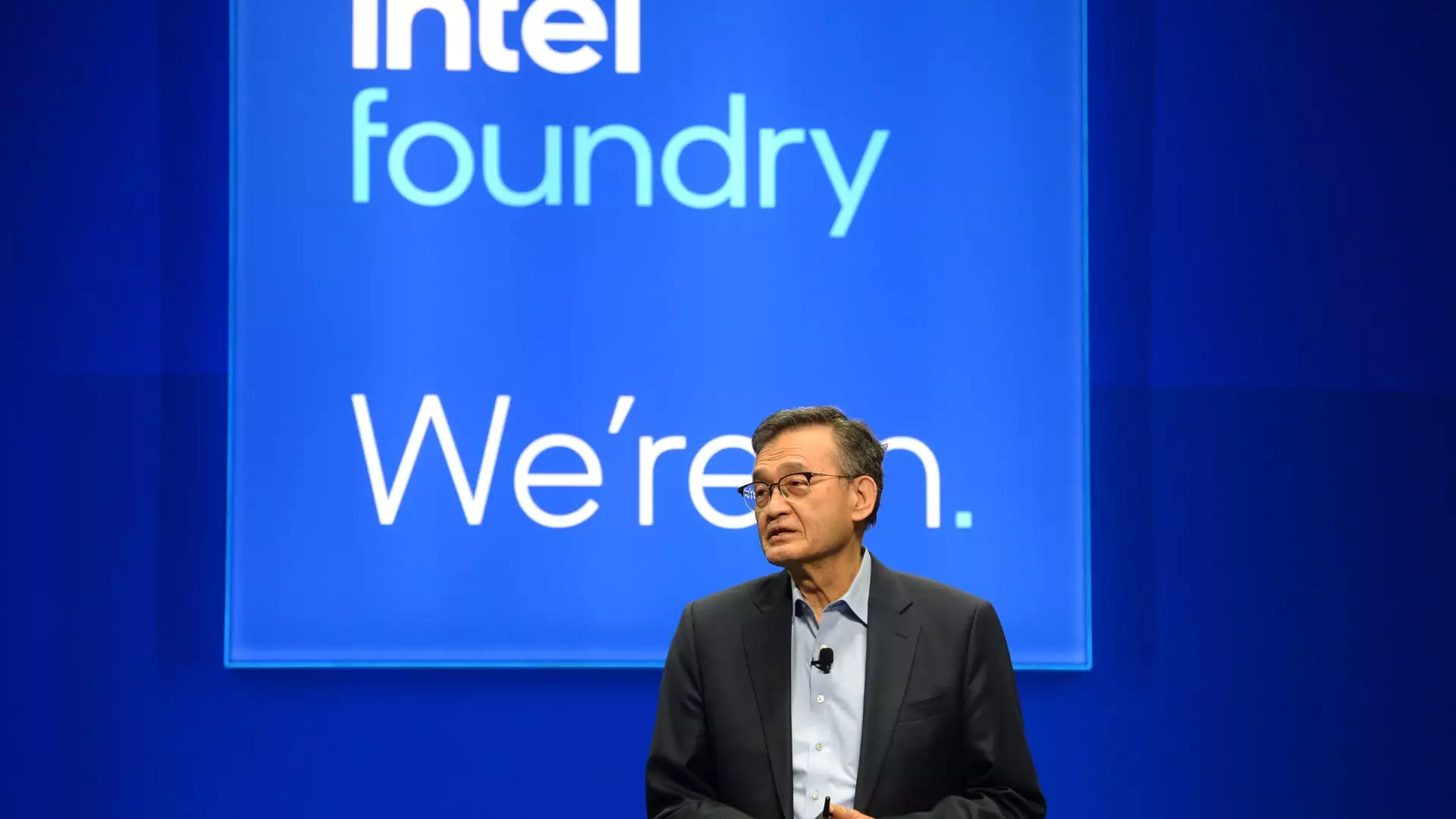Intel’s recent announcement to slash foundry costs and scale back its manufacturing efforts reflects a company that is desperately trying to adapt to a rapidly shifting semiconductor landscape. For years, Intel has been a dominant force, but its recent performance reveals a stagnation that threatens its long-term viability. The decision to “pause or discontinue” aspects of its foundry business signals a strategic pivot, but it also raises questions about the company’s confidence in its manufacturing future. While the move might conserve cash and reduce operational risks, it exposes an underlying dilemma: does Intel possess enough competitive advantage in a market increasingly driven by specialized chipmakers like Taiwan Semiconductor Manufacturing Company (TSMC) and Samsung?
The company’s acknowledgment that it has struggled to attract external foundry customers underscores a fundamental challenge. Instead of establishing itself as a major player in the foundry space, Intel finds itself increasingly reliant on internal demand and a handful of major clients. This dependency creates a brittle business model vulnerable to market fluctuations. The decision to abandon or scale back manufacturing projects in Europe and slowed production at other plants signals a testing of waters, perhaps an effort to prevent further overextension. Still, without external partnerships, Intel’s manufacturing arm risks becoming an expensive, ancillary operation rather than a strategic growth driver.
Market Reality vs. Corporate Aspirations
Despite better-than-expected earnings and optimistic forecasts, Intel’s stock suffered a brutal 9% decline, and year-to-date losses now dominate the narrative. A 60% plunge in value in 2024 raises a stern warning: investors are losing patience, and rightly so. The disconnect between the company’s internal improvements and external market confidence suggests that Intel’s troubles are not solely operational—they are strategic and perhaps cultural.
The company’s struggle to penetrate the AI market further compounds headwinds. Currently, Nvidia’s dominance in AI processing chips underlines Intel’s inability to capitalize on this high-growth segment. While Intel has announced new manufacturing nodes like 14A, the uncertain customer commitments threaten to render these investments futile. If they cannot secure significant external demand, these advanced nodes risk becoming costly “white elephants,” misaligned with actual market needs.
Furthermore, Intel’s decision to cut its workforce by 15% indicates a brutal acknowledgment of its overinvestment. The underutilized factories and fragmented plant footprint reveal missteps in strategic planning, especially after pouring resources into facilities that lack the demand to sustain them. If Intel cannot harness these assets effectively, it may fall further behind competitors who have optimized their manufacturing and R&D efforts.
Leadership’s Challenge and the Road Ahead
CEO Lip-Bu Tan’s admission of a turbulent start is a candid reflection of the immense challenges facing the company. His acknowledgment of “not being easy” highlights the internal struggles to redefine Intel’s identity. The company’s heavy layoffs and shrinking employee base paint a picture of a desperate attempt to streamline and focus.
Yet, the future remains uncertain. The question is whether Intel’s strategic retreat from aggressive foundry expansion is a sign of wisdom or a sign of retreat. Market share erosion at the expense of innovation and customer confidence may be difficult to recover from, even with new nodes and reorganization. For a company with such a storied history, this moment is critical—a crossroads that could either lead to a focused revival or deepen its decline.
The industry’s landscape has shifted dramatically from traditional dominance to a fiercely competitive environment where agility and specialization often trump massive manufacturing capacity. Intel’s efforts to regulate costs and reduce excess capacity might be prudent but also risk further marginalization if they cannot establish credible, external customer relationships swiftly.
In essence, Intel’s recent moves reveal a company entangled in internal contradictions: holding onto legacy strengths while desperately trying to build a sustainable future. For Intel to truly reinvent itself, it must not only cut costs but also cultivate genuine partnerships that allow it to leverage its technological innovations meaningfully. The road ahead demands boldness, strategic clarity, and perhaps an acceptance that no amount of cost-cutting alone will ensure its resurgence in the new semiconductor era.


Leave a Reply